Home » Laboratory Kneader – Micro Kneader
Laboratory Kneader – Micro Kneader
Lab Kneader
Details of Kneader
- The machine comprises a motor, cover press, main body, mixing chamber and rotor mechanism, gearbox, air control system, tilting machine, heating/cooling system, rubber belt transmission and base, etc.
- The kneader can be made into vacuum, pressure, atmospheric, Normal temperature, high temperature, low temperature, etc.
- The temperature adjustment method of a kneader can be the jacket, halfpipe, far-infrared tile, steam, hot water, heat transfer oil, electric heating, cooling water, chilled water, and other methods.
Application: Paint, Adhesive, Battery, Pharmaceutical industry, Cosmetic
Laboratory kneader function: electric heating, steam heating, and zero-distance heating are optional.
The laboratory kneader can be selected: manual turning cylinder, mechanical turning cylinder, the main structure is composed of five parts: kneading part, machine base part, hydraulic system, transmission system, and electric control system.
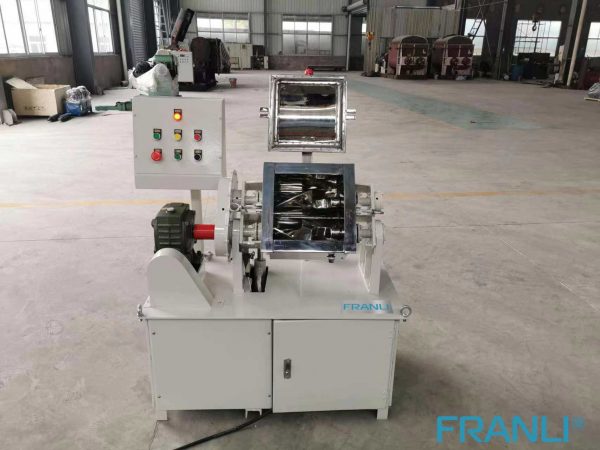
Structural features of laboratory kneader
1. The laboratory kneader generally adopts a through chassis for easy installation.
2. The helical gear or hard tooth surface reducer is used to make the transmission with the main engine stable, with low noise and long service life.
3. The stirring paddle and the inner wall of the mixing cylinder are made of 304 stainless steel or 316L stainless steel to ensure the purity of the product.
4. The shaft seal has an advanced structure and a good sealing effect. The unique design of the balance structure of the vacuum box ensures that no black material will be ground out.
5. Integrated electrical control (main engine operation, hydraulic tilting, hydraulic cover opening, and constant temperature control), temperature control, and temperature display, which is convenient for operation and process control.
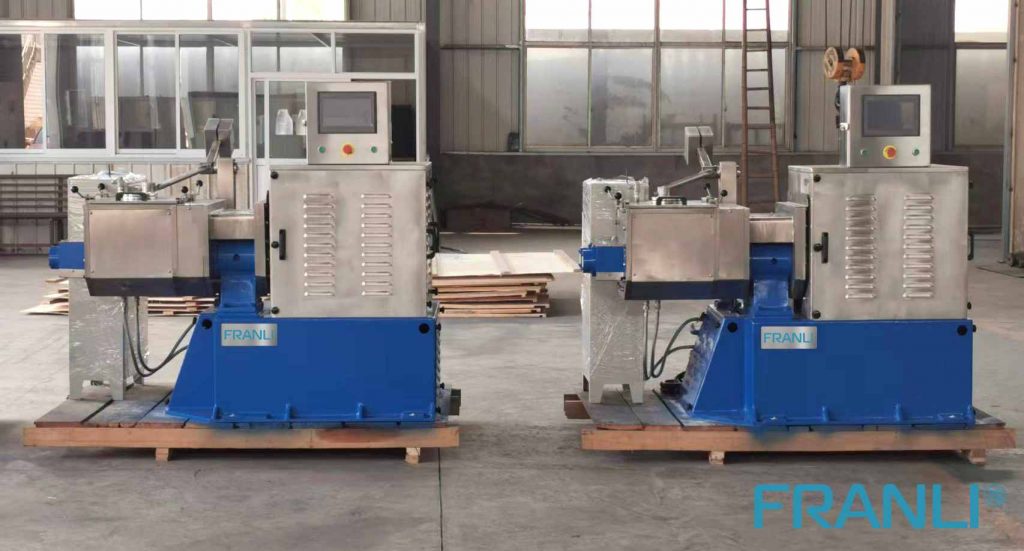
The hydraulic system of the laboratory kneader uses a hydraulic station to control the large oil cylinder to complete the opening and closing functions. The hydraulic system uses a hydraulic station to control the oil cylinder to complete functions such as turning over the cylinder and opening the cover. The detailed parameters can be arbitrarily set by the user. Selection and requirements, easy and reliable operation. The transmission system is composed of a motor, a reducer, and a gear, and the motor is matched according to the model of the laboratory kneader. The transmission part is the synchronous speed of the motor. After passing through the elastic coupling to the reducer, the fast paddle is driven by the output device to make it reach the specified speed, and the speed can also be adjusted by the frequency converter.
The laboratory kneader has two Σ-shaped paddles. The speed of the two paddles is different. Different speeds can be set according to different processes. The most common speed is 42/28 rpm.
The laboratory kneader can be designed as heating or non-heating according to the needs. The heat exchange methods usually include electric heating, steam heating, circulating hot oil heating, circulating water cooling, etc.
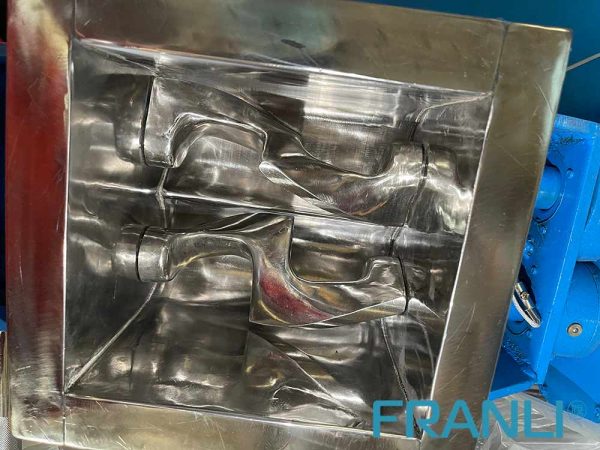
The laboratory kneader is a pair of mating and rotating blades (usually Z-shaped) that generate strong shearing action to make semi-dry or rubber-like viscous plastic materials react quickly to obtain uniform mixing and stirring. The laboratory kneader is an ideal equipment for mixing, kneading, crushing, dispersing, and polymerizing various chemical products of various high-viscosity elastic-plastic materials. It has the advantages of uniform mixing, no dead angle, and high kneading efficiency. Widely used in high-viscosity sealant, silicone rubber, neutral acid glass glue, chewing gum, bubble gum, pulp, and cellulose, also used in batteries, inks, pigments, dyes, medicines, resins, plastics, rubber, cosmetics, and other industries.
The laboratory kneader can be made into four types: ordinary type, pressure type, vacuum type, and high-temperature type. According to the material, it can be divided into carbon steel kneader, stainless steel kneader, and special material kneader. The form of temperature adjustment adopts methods such as jacket, steam, oil high-temperature kneader heating, water cooling, etc., and hydraulic cylinder turning and cover opening are adopted. The discharge methods include hydraulic pressure, cylinder dumping, ball valve discharge, screw extrusion, hydraulic flap discharge, etc. And it can control and record the temperature, time, viscosity, and other related data in production in real-time through PLC. The cylinder body and the part of the paddle in contact with the material are made of stainless steel, alloy steel, manganese steel, and other materials to ensure product quality.
As the use of laboratory kneaders is becoming more and more extensive, it can be said that there will be a big gap in the performance level of each aspect, resulting in different process performances, and the standards that customers need to refer to in terms of selection are different. Its configuration function can be freely and flexibly selected, and a more suitable model can be found, which will make you feel more at ease in the process of using it. Strictly grasp the technical requirements of the R&D and design of the laboratory kneader to ensure that the quality is guaranteed, so that customers will be more at ease during the purchase process. With guaranteed quality advantages and characteristics, there will be gaps in the reference choices brought to customers, so that they will be more at ease when choosing in the market.
Welcome to send inquiry to us and let’s make a win win business together !
Guidelines For Kneader
The dispersion kneader is suited for rubber and plastic mastication, as well as the blending of different rubber and plastic components. Small and medium-sized rubber and plastics manufacturers with a wide range of product types and colours, as well as food, dyes, pharmaceuticals, and ceramics, can benefit from the internal mixer.
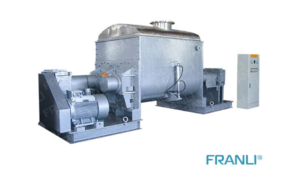
Sigma Kneader: The Solution for Mixing and Kneading
Sigma kneader is a versatile machine that can be used for mixing, kneading, and homogenizing a wide range of materials, including high-viscosity products.
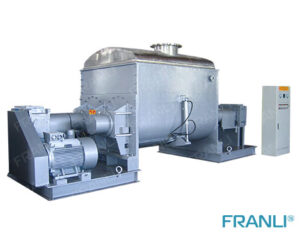
Sigma Mixer: Indispensable Equipment For Manufacturing
Sigma Mixer is a type of mixer that uses a unique mixing principle to achieve an efficient blending of materials. The mixer consists of two blades that rotate in opposite directions, creating a kneading and folding action that ensures thorough mixing. The blades are shaped like the Greek letter Sigma, hence the name Sigma Mixer.

Sigma Blade Mixer: The Mixing Solution
The Sigma Blade Mixer is a robust and reliable mixing machine that uses a unique mixing principle to achieve superior results. It is a type of double-arm kneading mixer that features two blades that rotate in opposite directions.

Vacuum Kneader: A Machine for Your Mixing Needs
The Vacuum Kneader is a type of mixer that utilizes a vacuum chamber to create a homogeneous mix of ingredients. It is designed to knead, mix, and disperse high-viscosity materials under vacuum conditions, resulting in a superior product.

Efficiency and Effectiveness of Dispersion Kneader
The dispersion kneader has complete control over the mixing and blending of the raw materials to create an even mix that allows for better distribution. This device contains a mixing chamber with rotating blades made of high-quality steel.

Vacuum kneader: high efficiency and environmental protection
A vacuum kneader is mainly used for stirring, mixing, and kneading high-viscosity and elastic-plastic materials. The most common fields include high-viscosity sealant, silicone rubber, neutral acid glass glue, chewing gum, bubble gum, aluminum silver paste, silica gel, paper pulp, cellulose, and other materials. It covers food, agrochemical, pharmaceutical, cosmetics, electronic paste, and other industries, and has been sought after by the industry.

